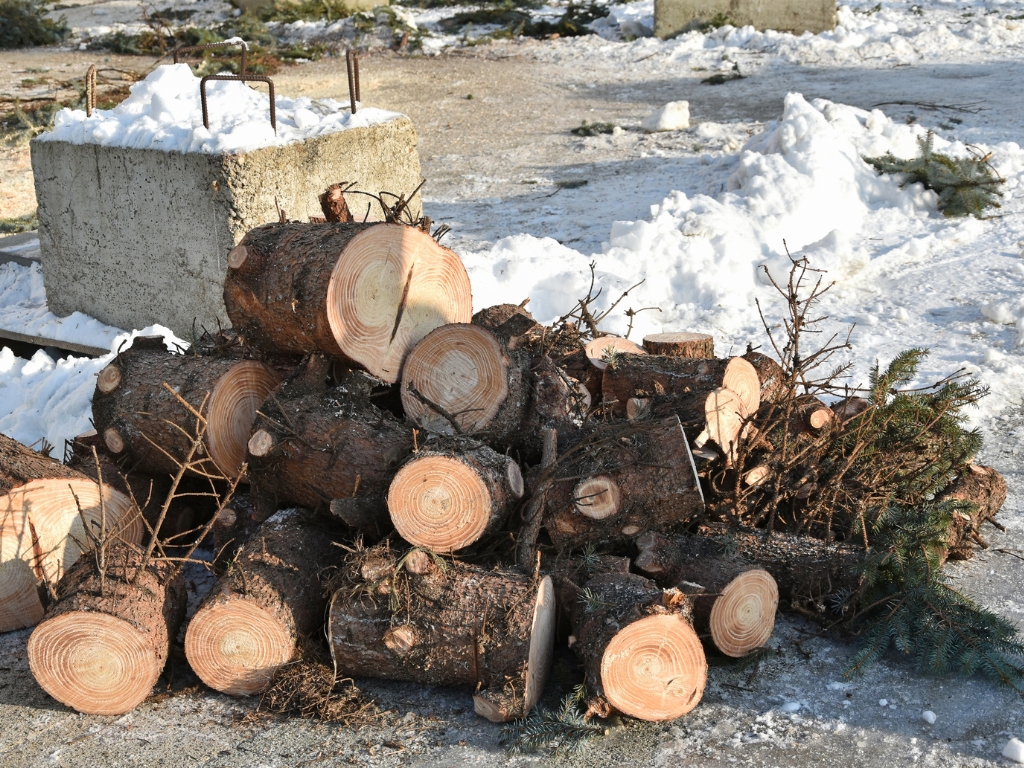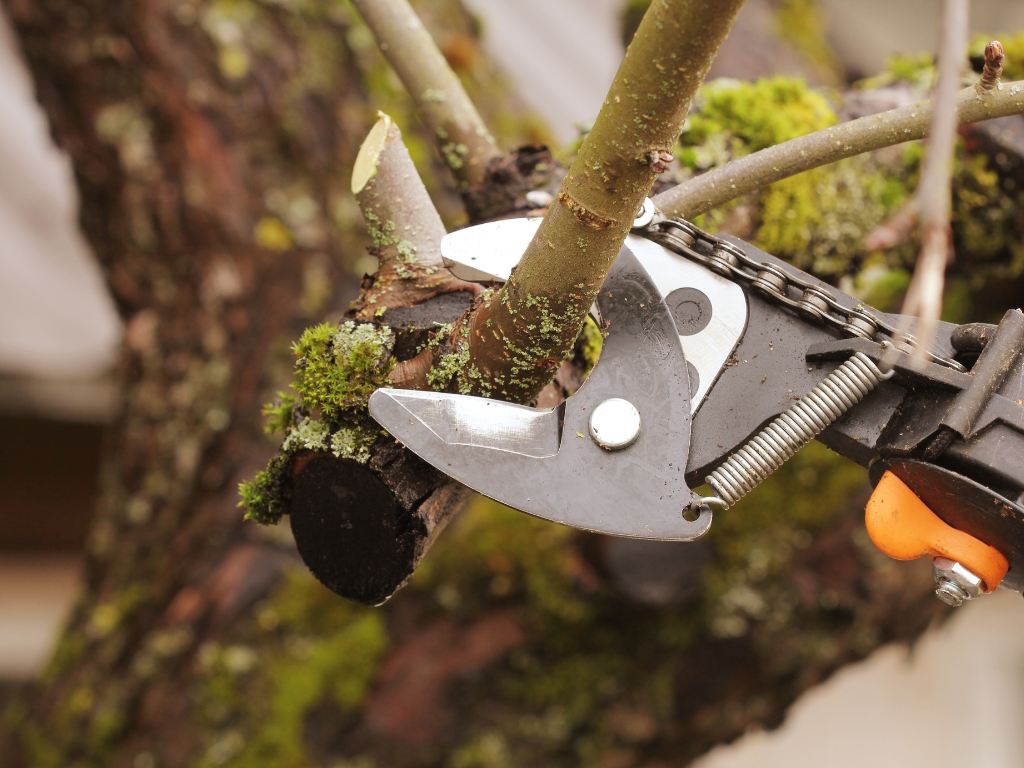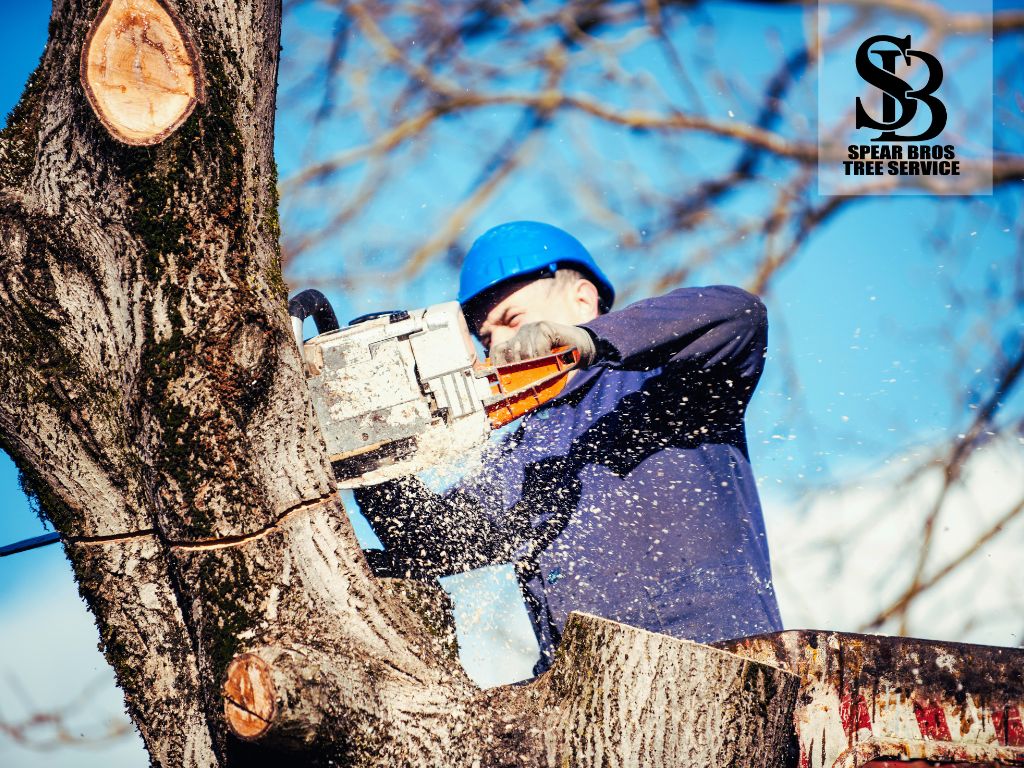Winter can be tough on landscapes, especially for residential and commercial customers in areas prone to heavy snow, ice, and high winds.
As temperatures drop, trees and large plants may become more susceptible to weather-related damage, posing risks to both your property and loved ones.
Proactively winter-proofing your landscape by using emergency tree services can help prevent further damage, costly repairs, and potential hazards.
In this post, we’ll explore why emergency tree service is essential for winter, how they help prevent tree damage and tips to keep your landscape resilient all season long.
Key Takeaways
- Winter weather can create tree hazards. Emergency tree services prevent risks by removing damaged branches and stabilizing trees.
- Proactively addressing weak limbs and tree structures minimizes costly storm-related repairs for both residential and commercial properties.
- Cabling, bracing, and regular pruning protect trees from snow and ice damage, promoting healthy growth come spring.
- Clearing snow from lower branches reduces damage risk, and having a reliable emergency service ensures quick response in hazardous conditions.
- Certified arborists use industry best practices to manage tree emergencies safely.
What is Emergency Tree Service?
Emergency tree service is a specialized service focused on handling hazardous situations involving trees, particularly during extreme weather events.
From removing damaged trees and dangerous branches hanging over homes to stabilizing trees weakened by ice and snow, emergency tree removal experts act quickly to prevent immediate risks.
These tree emergency services are crucial when unexpected storms or severe winter weather compromise tree safety, potentially causing fallen trees, broken branches, or even entire trees to fall.
Why is Emergency Tree Service Important for Winter?
Emergency tree service is vital in winter due to the increased risk of tree damage from high winds, snow, and ice.
Heavy snow and ice accumulation can weigh down large branches, making them susceptible to snapping, while extreme winds can destabilize weakened trees, especially those close to power lines or structures.
- Reduces Property Damage: A large, weakened branch or tree that falls can easily damage your roof, car, or property structures. Tree services, including storm cleanup and tree removal, save residential and commercial customers from potentially costly repairs.
- Ensures Safety: Fallen trees and broken branches can harm residents. Emergency tree service prioritizes safety by responding quickly to prevent incidents.
- Preserve Plant Health Care: Removing compromised or dying trees in winter ensures the surrounding area and vegetation can remain healthy. This maintenance also reduces the spread of diseases among trees and plants, supporting healthy growth in spring.
Key Benefits of Winter-Proofing Your Landscape
Winter-proofing your landscape with Bristol or Hartford tree service can save you time, money, and stress. Here’s how:
- Prevents Costly Repairs: Proactively addressing weak limbs and damaged trees before or after storms helps avoid major repair costs.
- Improves Tree Stability: Emergency services often include tree bracing, cabling, and pruning, reinforcing weakened trees, preserving tree health, and protecting your home.
- Provides Fast Response Times: Emergency tree services ensure you have help on call to handle tree emergencies without delays.
Winter-Proofing Your Trees and Landscape
To keep your landscape resilient through winter storms, taking proactive steps can ensure both tree health and property safety. Here’s a closer look at each strategy:
Tip #1: Inspect Trees Before Winter
Regular inspections are the foundation of winter landscape safety. During an inspection, look for decay, cracked or broken branches, and trees leaning close to power lines, buildings, or other structures.
Signs of decay may include discolored bark, fungus growth around the base, or brittle branches that snap easily.
In many cases, decay begins internally, so consulting with emergency tree service professionals or certified arborists is essential. These experts can spot hidden issues and determine if a tree or branch poses a potential risk.
Tip #2: Trim Weak Branches
Pruning dangerous branches in the fall can prevent accidents during winter storms. Weak or low-hanging branches are especially vulnerable to heavy snow or ice buildup, which increases the likelihood of snapping.
Proper pruning removes these dangerous branches without impacting the tree’s natural growth. Certified tree service companies know how to identify and safely remove these branches, often using specialized equipment to ensure precision.
Routine pruning not only enhances safety but also contributes to the overall health of the tree, supporting healthy growth when spring returns.
Tip #3: Use Cabling and Bracing
Trees with structural vulnerabilities, such as those with multiple trunks or split branches, can benefit significantly from cabling and bracing.
These techniques involve installing flexible cables and braces to provide extra support, which is especially important when branches bear the additional weight of snow and ice.
Cabling and bracing don’t just reinforce the tree’s stability but also help maintain its shape and prevent the need for extensive pruning.
This proactive approach can keep your landscape looking natural and healthy as the tree’s branches are strengthened rather than removed.
Tip #4: Regularly Clear Snow and Ice
While it’s common to leave snow untouched on larger trees, regularly clearing it from smaller or lower branches can reduce unnecessary stress.
Accumulated snow and ice add significant weight, causing branches to bend or, in severe cases, break.
Gently removing snow using a broom or shaking branches can help reduce this risk, especially after heavy snowfall. However, avoid aggressive methods that may cause branches to snap.
This simple maintenance step goes a long way in preventing damage to the trees and nearby structures, such as fences or sheds, that could otherwise be affected by falling branches.
Tip #5: Invest in Emergency Tree Services
Emergency tree services provide peace of mind, knowing that expert assistance is available when severe weather strikes.
Bristol or Hartford tree services like Spear Bro’s Tree Service offer swift responses to tree emergencies, helping residential and commercial customers manage storm damage or hazardous situations.
With professionals on call, you can tackle issues such as fallen trees, large branches blocking driveways, or tree roots exposed by strong winds.
Emergency tree services often cover a range of urgent needs, from stump grinding and removal to storm damage cleanup, and they utilize industry best practices and specialized equipment to handle hazardous trees safely.
Why Choose Expert Emergency Tree Services?
Professional tree service companies offer competitive rates and have specialized equipment and experience to safely remove trees and address hazardous situations.
For fully insured and licensed services, contacting certified arborists can make a difference, especially for storm damage clean-up or removing large branches.
Bristol, East Hartford, West Hartford, and surrounding areas can benefit from these experienced arborists who provide additional services like stump removal, stump grinding, and tree care.
Final Thoughts
Winterizing your landscape requires more than covering flower beds. Trees, especially those close to buildings, need proper care to withstand extreme weather. With winter-proofing and emergency tree removal services, you can minimize risk and avoid costly repairs.
If you’re concerned about your trees this winter, contact Spear Bro’s Tree Service for a free estimate from trusted tree care professionals. Fully insured and experienced, they prioritize safety, supporting your property’s resilience and the health of your landscape.





